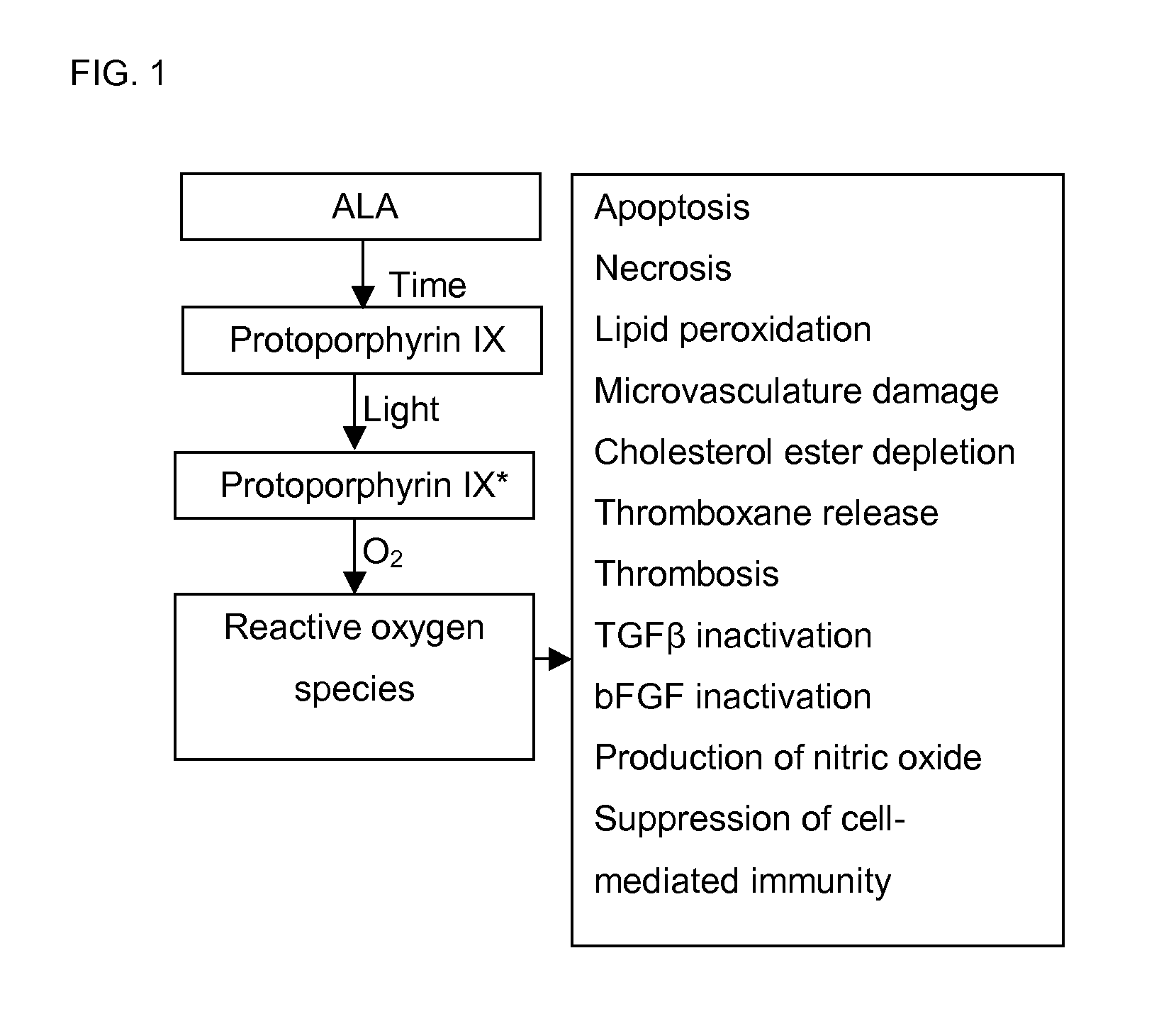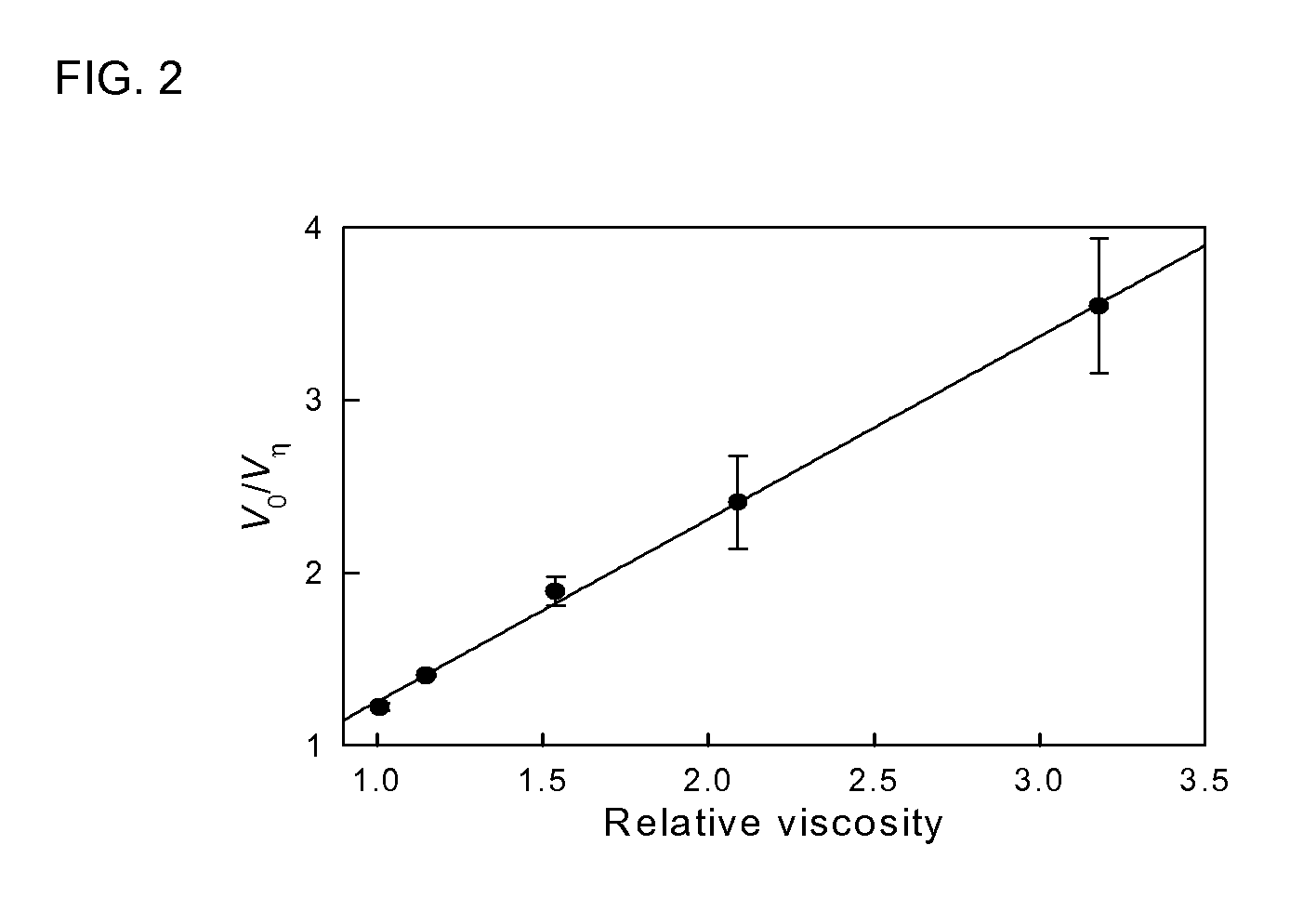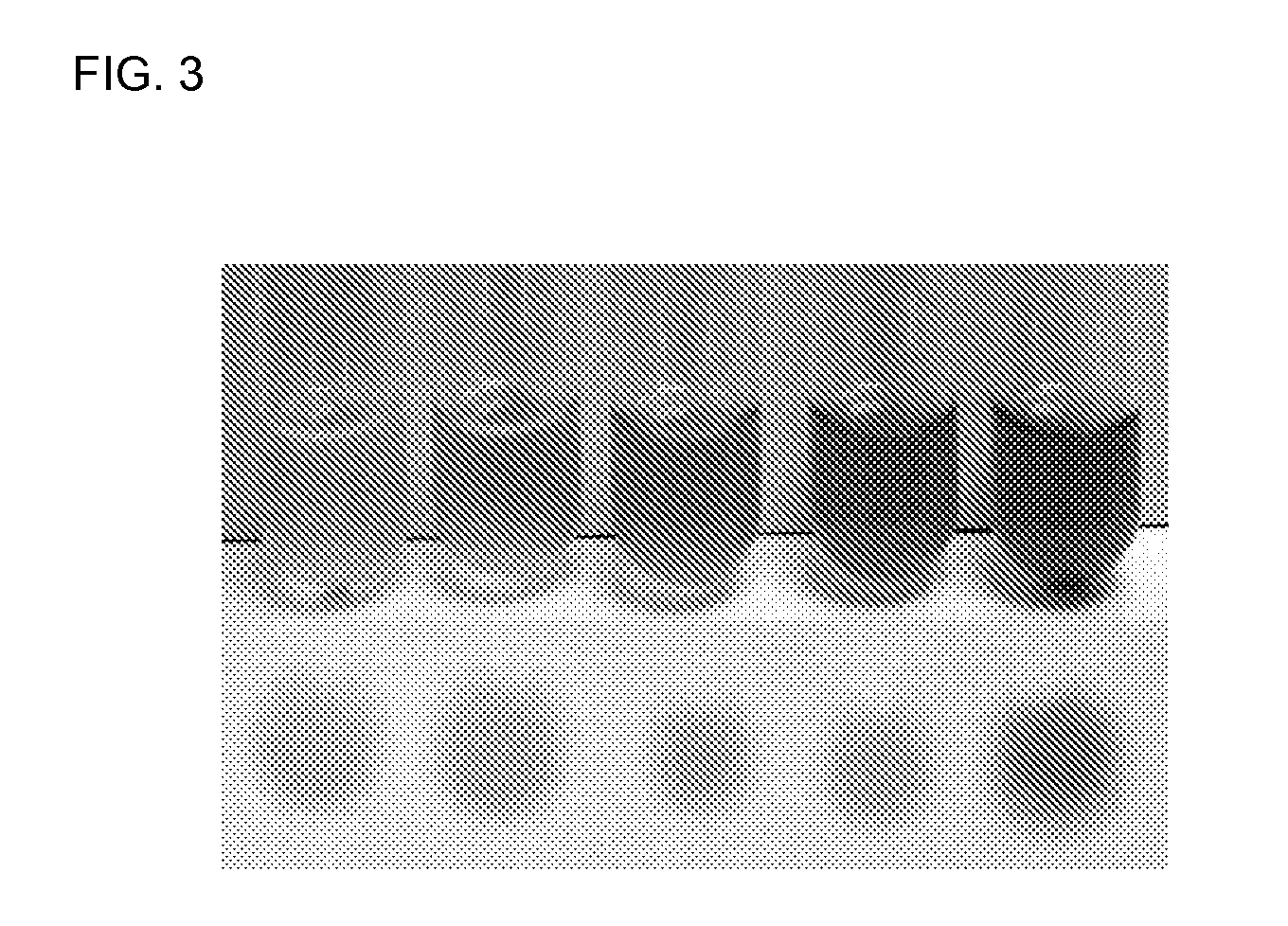Therapeutic Applications of Aminolevulinate Synthase
a technology of aminolevulinate and aminolevulinate, which is applied in the field of medicine, can solve the problems of reducing collateral damage and achieves the effects of stimulating optimal photosynthesis, improving treatment effect, and increasing the incidence of complete remission
- Summary
- Abstract
- Description
- Claims
- Application Information
AI Technical Summary
Benefits of technology
Problems solved by technology
Method used
Image
Examples
example 1
[0035]Development and characterization of procedures for the creation, identification, and use of a 5-aminolevulinate synthase variant conferring maximal photosensitivity upon a given cell population.
[0036]ALAS is a pyridoxal phosphate dependent enzyme that is evolutionarily related to transaminases. A great deal of information regarding the structure and function of the enzyme has been generated by kinetic, spectroscopic, and point mutational analysis studies. Continuous steady-state kinetic assay for ALAS, which utilize cycling of the succinyl-CoA substrate to allow precise determination of ALA production rates at sub-saturating concentrations of this substrate down into the nanomolar range have been developed. (Hunter, G. A., et al. (1995) Anal Biochem 226:221-4) A structural and mechanistic model for the ALAS active site has been proposed based on sequence homologies and the known crystal structure and enzymology of the distantly related enzyme aspartate aminotransferase (Gong, ...
PUM
| Property | Measurement | Unit |
|---|---|---|
| Time | aaaaa | aaaaa |
| Time | aaaaa | aaaaa |
| Time | aaaaa | aaaaa |
Abstract
Description
Claims
Application Information
 Login to View More
Login to View More - R&D
- Intellectual Property
- Life Sciences
- Materials
- Tech Scout
- Unparalleled Data Quality
- Higher Quality Content
- 60% Fewer Hallucinations
Browse by: Latest US Patents, China's latest patents, Technical Efficacy Thesaurus, Application Domain, Technology Topic, Popular Technical Reports.
© 2025 PatSnap. All rights reserved.Legal|Privacy policy|Modern Slavery Act Transparency Statement|Sitemap|About US| Contact US: help@patsnap.com



